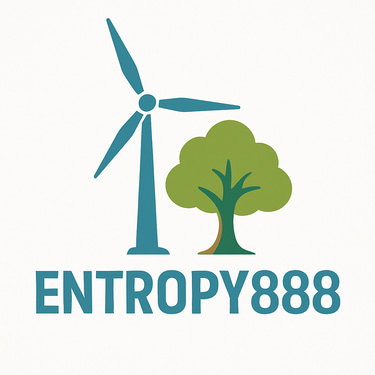After the Halving: How Renewable Mining Redefines Profitability in 2025–2026
Every four years, the Bitcoin network resets its economics through a process known as the halving — cutting the block reward in half and forcing the industry to evolve. In 2024, miners saw rewards drop from 6.25 to 3.125 BTC per block. By 2025–2026, this new reality will have fully reshaped the mining landscape. Only one model will remain profitable and resilient: renewable-powered, low-cost, intelligent mining.
RENEWABLE ENERGY & BITCOIN MINING
Chris Boubalos
10/27/2025
1. The Halving Effect: Pressure Creates Innovation
Halvings always push miners toward greater efficiency.
In 2016, it drove industrial scaling.
In 2020, it triggered the rise of next-gen ASICs.
In 2024, it is ushering in the renewable era.
With revenue per terahash cut in half, miners must reduce their cost base dramatically.
The only sustainable path forward: nearly free renewable energy and smart automation.
2. Profitability in the Post-Halving World
Let’s simplify the new economics:
ParameterPre-Halving (2023–2024)Post-Halving (2025–2026)Block Reward6.25 BTC3.125 BTCNetwork DifficultyRisingAcceleratingPower Efficiency30–35 J/TH20–25 J/TH (S21 class)Profit DriverHashrateEnergy Cost + EfficiencyWinning ModelCheap gridRenewable & flexible
The takeaway:
Hashrate matters — but energy strategy matters more.
3. Renewables Redefine the Cost Curve
By 2025, renewables are already the cheapest source of power in most regions.
When integrated directly with mining, they eliminate grid fees, intermediaries, and volatility.
Hydro, solar, and wind projects paired with modular mining systems can achieve power costs below $0.02/kWh, a threshold that keeps operations profitable even after halving.
Meanwhile, miners dependent on fossil or grid power are forced to shut down or relocate.
4. The Rise of Energy-Mining Symbiosis
Between 2025 and 2026, the global energy–mining relationship will become symbiotic:
Energy producers gain stable demand and new revenue.
Miners gain access to ultra-cheap, clean electricity.
Grids gain flexibility and frequency support.
This isn’t speculation — it’s happening now, as renewable farms across Europe, Africa, and Asia co-locate mining containers to monetize surplus energy.
5. Smarter Operations Through Automation
In a post-halving market, efficiency gains come not only from better hardware, but also from smarter systems.
AI and automation enable:
Dynamic load control based on electricity availability.
Predictive maintenance to prevent downtime.
Optimized hashrate per energy unit.
These technologies can boost overall mining profitability by 10–20%, making the difference between survival and shutdown.
6. Environmental and Financial Alignment
For the first time in mining history, environmental responsibility equals financial performance.
Clean energy is not a marketing point — it’s an economic advantage.
The best-performing miners of 2025–2026 will also be the greenest ones, because they operate on near-zero-cost renewable power.
Entropy888’s model captures this synergy — transforming clean energy into Bitcoin, and Bitcoin into ecological regeneration.
7. The Entropy888 Edge
At Entropy888, we design mining systems ready for the post-halving world:
Powered exclusively by renewables.
Modular and scalable to match local capacity.
AI-optimized for maximum uptime and efficiency.
Revenue-sharing with energy producers for mutual benefit.
Our approach proves that the future of profitability is not higher consumption — it’s smarter energy use.
Conclusion
The 2024 halving didn’t end profitability — it redefined it.
By 2025–2026, only miners who align with renewable energy, automation, and sustainability will thrive.
The equation is simple:
Energy efficiency + Renewable integration = Post-halving survival.
Entropy888 stands at the forefront of that transition — showing that Bitcoin mining’s future is not just profitable, but sustainable, resilient, and regenerative.
Contact
© 2025 Entropy888. All rights reserved.
Powered by Renewable Energy.
Christos Boubalos - Business Development Lead +306972 885885 mob/whatsapp
christos@entropy888.com
-------------------------------------------
General Enquiries - info@entropy888.com
